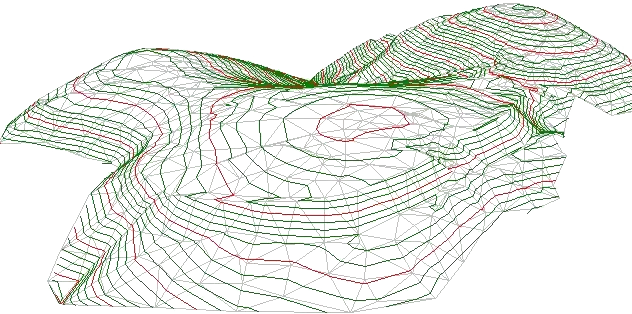A triangulated irregular network (TIN) is a digital data structure used to representation of a terrain surface. A TIN is a vector-based representation of the land surface, made up of irregularly distributed nodes and lines with three-dimensional coordinates (x, y, and z) that are arranged in a network of non-overlapping triangles. The vertices of each triangle are known data points (x,y) with values in the third dimension (z) taken from surveys, topographic maps, or digital elevations models (DEMs). The surface of each triangle has a slope, aspect, surface area, and continuous, interpolated elevation values. The selective inclusion of points within a TIN gives the triangles their irregular pattern and reduces the amount of data storage required relative to the regularly distributed points in a DEM.

Unfortunately, the ESRI TIN data file format is a proprietary, not documented, and there are no publicly available utilities for reading this data or converting this data to a different format. However, there are ways an ESRI TIN can be converted to so that it can be used in with our software.
Converting ESRI TIN to Grid
The elevation TIN can be converted to an elevation grid, which can then be used in our software. The ESRI 3D Analyst TIN to Raster geoprocessing tool can be used to create a raster elevation grid from a TIN, as described here.
Converting ESRI TIN to Contours
Elevation contours can be generated from the elevation TIN, and the elevation contours can then be used in our software. The ESRI 3D Analyst Contour geoprocessing tool can be used to create contours from a TIN, as described here.
Converting ESRI TIN to LandXML
While ESRI provides an import tool to import a LandXML TIN to an ESRI TIN, ESRI does not provide a reverse tool for this. However, numerous ESRI customers have requested this functionality.
